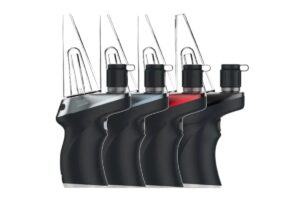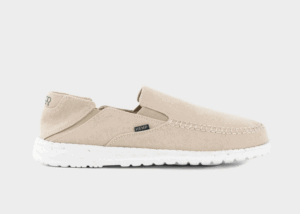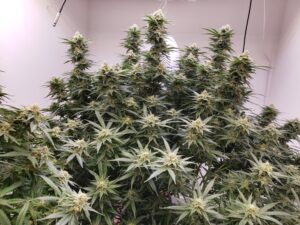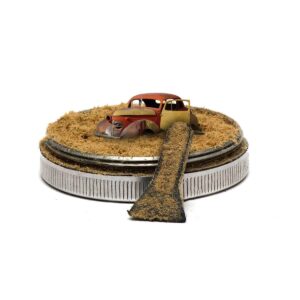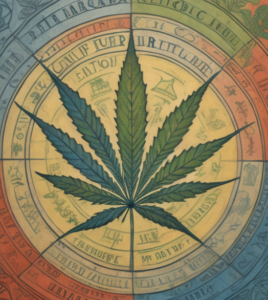This guide here is for anyone new to Counter-Strike, and for players who are used to CS:GO but are finding the new mechanics a bit tricky. Don't worry, the switch can be tough, but this guide will make you understand all these new changes. It'll help you get better faster and you'll be playing like a pro in no time.
1. Master Movement Mechanics
Good gameplay in CS2 starts with how well you move. Unlike a lot of today's shooter games, Counter-Strike reduces your shooting accuracy if you try to shoot while moving.
Counter-strafing - when you press the opposite keyboard button to make your character stop on a dime. Let's say you're moving left (A key), quickly press D and wait before you fire. This lets you shoot with precision as you move and is necessary for peek-shooting from behind corners. Keep practicing on aim maps until it's second nature.
2. Callout Mastery
In CS2, knocking out your rivals with your sharp 'Callout Mastery' is essential. Using brief, potent callouts gives you an extra advantage. Playing on Mirage? That's everyone's top pick, so every player should have the necessary callouts ready. 'Palace' is a quick route from T spawn to A site, while 'Jungle' and 'connector' link mid to A site. 'Window' and 'catwalk' offer views of mid.
Another example, Dust 2. Important Dust 2 callouts consist of 'long A,' 'short A' also known as 'catwalk', and 'mid' for the main paths.A smart way of learning includes map studies and team communication practice.
3. Crosshair Placement
Proper crosshair placement dramatically reduces reaction time needed to secure kills and represents the clearest difference between novice and experienced players.
- Always keep your crosshair at head height where enemies will appear. On Dust 2 long A, for example, position your crosshair exactly where an enemy's head would peek from pit or A site. This height varies slightly based on elevation changes across maps. Create a mental map of head heights for common engagement points.
- Learn to pre-aim positions where enemies commonly hold. When entering B site on Mirage, systematically check bench, van, site corner, and market window—places where defenders typically position themselves. This methodical clearing of angles prevents being caught off-guard and gives you the initiative in gunfights.
4. Economy Management
Cash management in CS2 can be a big part of winning matches, and it doesn't even have anything to do with your aiming skills. Knowing when to shell out for gear and when to hang on to your cash can give you a strategic edge during a match.
There'll be times when your team's strapped for cash (below 3000-3500), and buying good equipment's just not in the cards. That's when it's smart to hold a save round. Instead of shopping big, you might want to just pick up a pistol (P250 or Five-SeveN/CZ-75/Tec-9) to up your odds of nabbing a weapon from the enemy when they go down. You’re not necessarily in it to win the round, but to dent the rival team's bank balance by forcing them to replace their fallen weapons. On the CT side, it's usually a smarter move to save the pricey AWPs rather than going for ambitious retakes.
It's a good idea to force buy when the rival team's cash flow is shaky or your team has had a spell of losses and needs to turn the tide. If you've managed to get the first round, but flubbed the second, a third-round force buy might catch adversaries off-guard, as their supplies and firearms may be inferior. In the same vein, if the rival team's been bagging rounds but losing players, a well-planned force buy can clean out their coffers. Don't resort to repeated force buys though, as it could plunge your team into a longer period of economic strain.
5. Recoil Control
The way CS2 keeps the gun spray pattern predictable, just like before, is something old players need to get accustomed to. These are the first ten bullets: In most gunfights, the first few bullets decide who wins. For the AK-47, the first ten bullets have a T-type trajectory. It goes straight up for the first 5-6 bullets, then to the right, and then to the left. To counter this, pull your aim down gently for the first 5-6 bullets, move a bit to the left, then to the right. The M4A4 has similar aim controls but less side-to-side movement. Get these patterns into your muscle memory in the practice range before you try them out in matches.
6. Weapon Selection
Instead of picking your weapon based on what you like, consider your role, where you are on the map, and how much money you have available.
On long-distance maps like Dust 2, go with guns known for their accuracy like the AK-47 and M4A4. When you're in close combat situations on maps like the apartments on Inferno, guns like MP9 help you move around easier. The AWP works great when you're covering areas with long view distances, whereas shotguns can wreak havoc in tight spaces like the vents on Nuke. Don't go with the same guns every time; pick your weapons based on your position and how you plan to play that round.
7. Utility Usage
If you use utilities properly, they can provide safer entry points, shut down enemy positions, and give an upper hand in information.
It's a good idea to learn ~2 key smoke lineups for every map you play. For example, on Mirage, the 'window' and 'connector' smokes from the T base let you grab control of mid more safely. On Inferno, smoking 'CT' and 'coffins' makes it easier to take over the B site. Repeat these lineups on non-public servers until you can pull them off regularly even under stress. CS2's smokes are more realistic than the ones in CS:GO, with better spread and bounce.
8.Map Control
Strategic map control creates advantages beyond simple firefight victories.There's real power in strategically controlling your map, beyond mere firefight wins. Let's talk about how central control, or mid control, can tip the game in your favour across most CS2 maps. This kind of mastery offers you flexibility in your rotations and chances to collect vital information. Let's take Mirage as an example. When you control mid here, it puts Ts in a place of power; they can threaten both A and B sites, making CTs stretch their defenses thin. Moving to Dust 2, mid control can allow for short A pushes and B splits. Then there's Inferno, where mid control (including 'top mid' and 'second mid') can open up various attack options. So, it's really worth it to focus on mid presence early in rounds, even if your strategy is just to collect info and execute later.
9. Communication Essentials
Effective communication balances information completeness with brevity. Effective communication should be both complete and brief. Keep your callouts concise: format them as 'number of enemies + place + what they're doing.' For example: 'Two at A ramp, one with AWP, retreating.' The format offers useful information without causing too much chatter. Don't discuss unnecessary stuff like damage dealt unless specifically requested. After you're out, share detailed information once, then keep quiet so teammates can concentrate and listen to gameplay sounds.
10. Trading Kills
The ability to trade kills often determines round outcomes more than individual aim duels. Put yourself in a place where you can attack opponents who have just taken out your buddies. If you're attacking Site A in Mirage, approach it from different angles (like the palace and ramp) instead of forming a single line. Stay visually connected with your team during attacks. Keep a good balance where you're close enough to quickly swap a kill, but distant enough to dodge getting killed by the same burst of bullets or explosive. You should be able to take a look and shoot within a second after your teammate is gone.
11. Jiggle Peeking
One of its brilliant benefits is being able to collect game information safely. How is it done? Easy. You hustle quickly into an enemy's sightline and then dart back to cover in a split second, revealing yourself for only a microsecond. This quick in-out strategy lets you see enemy moves while keeping you safe from attack.
Another excellent use of jiggle peeking is to bait AWP shots. The AWP players are something to watch out for, but they become less risk after they take their shot. You can jiggle peek to provoke an AWP shot, then using the 1.5-second reloading window, you can make your move or regroup.
12. Off-Angles
In tactical gameplay of CS2, being predictable means losing. Try unexpected placements, also known as off-angles. Off-angles are just spots outside of the normal aim points. Take Inferno B site for example, instead of usual spots like spools or fountain, try standing in the corner by the first oranges or snug against the site wall. These spots force the attackers to move their crosshair, giving you a tiny time advantage. Promptly change your spots during the game, to keep the opponents from catching on to your tricks.
13. Post-Plant Positions
Getting the bomb planted is only the first part of your job. You need to think about time management too: in CS2, the 40-second bomb timer shapes your strategy after you've planted the bomb. You should be in a spot where the CTs will take the longest time possible to reach the bomb. For example, on the Mirage B site, if you plant for the apartments, you can defend from the market, apartments, or kitchen. This way, CTs have to check multiple places before they can get to the bomb. Try to work out where the CTs might rotate from, based on where you last saw them. If you spotted them at A, they'd take roughly 15 seconds to get to B if they go through the connector, or 20 seconds if they go through the CT spawn.
14. Optimal Settings
Using the right technical settings can give you an edge over others, regardless of your skill level. For example, mouse sensitivity: it's a balancing act. You need to have enough precision but also move easily. Most pro gamers go for an eDPI (DPI times in-game sensitivity) of 800-1200. Start off with 400 DPI and 2.0 in-game sensitivity and change it based on what feels right. You can test if it's okay by aiming at a point on a wall while moving sideways - your aim should stay steady without trying too hard. CS2 processes mouse input quicker than CS:GO, so if you're used to playing that, you might need to tweak the mouse sensitivity.
15. Audio Configuration
Set audio output to stereo headphones rather than surround sound options, which can distort directional cues. Enable "Advanced 3D Audio Processing" in audio settings to improve positional accuracy. Disable any external audio processing from headphone software or drivers that might interfere with game audio. CS2 HRTF (Head-Related Transfer Function) technology significantly improves vertical sound positioning compared to CS:GO, making it easier to distinguish sounds from different elevations.
The best way to get good at CS2 isn't simply playing casually, but by practicing deliberately. Make a daily training schedule that focuses on specific abilities like this: Spend 15 minutes on recoil control, 15 minutes practicing your movements, and 15 minutes rehearsing utility lineups, all before you start your competitive matches.



